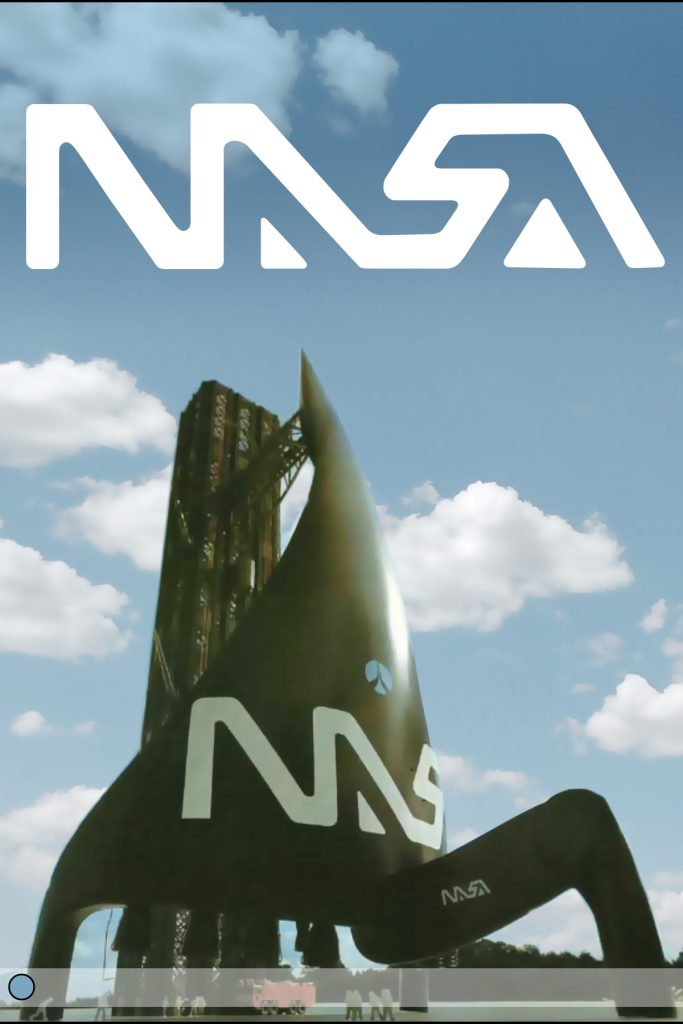
If the famous NASA ‘worm’ logo was ever to be brought back, maybe it could be revived in the form on this space shuttle concept, the Polymorph space shuttle design by Luigi Colani.
The only information I could find was about this concept was in an old NASA research pdf. Engineering Derivatives from Biological Systems for Advanced Aerospace Applications by Daniel L. Winfield, Dean H.Hering, and David Cole.
“Bio-Design The design sophistication of biological systems has encouraged many to develop solutions inspired by the forms and structure of living creatures. This design philosophy is known as Bio-design. Bio-design considers the internal and external architecture of living machines to be extremely efficient design solutions developed to perform multiple role functions in their corresponding environments.
Bio-design is probably the earliest type of design methodology used by man and examples of its application are abundant throughout our history. Probably the greatest beneficiary of this design methodology is the area of transportation design. Early conquest of the air and oceans by man was made possible by using bio-design as the base-line of the objects travelling through these mediums. The use of a fish form for a boat hull or a submarine and the form of a flying bird for the basic configuration of an airplane are not coincidental design solutions. Interestingly enough, these design adaptations were made with very little, if any, scientific knowledge of fluid dynamics but with only the convictions of the pioneer designers that the shapes of these living machines were the best suited forms to perform in the respective environments.
One of the strongest supporters of this design philosophy of our time is Luigi Colani, a Swiss designer based in Germany, who for over 30 years has used biodesign as an inspiration in the design of a wide spectrum of objects, large and small, including several innovative transportation vehicles for all environments. His bio-design approach to aerospace vehicles has resulted in futuristic concepts which provide a source of inspiration to designers involved in this field, even though some of them are not presently possible.
At the request of Rockwell International, Colani developed a Space Shuttle concept named “Polymorph” which seems to have been inspired by the forms of flying insects. According to Colani, this concept maximizes the efficiency of both reentry and gliding through the air by composing the overall body in a half circular cone with the nose being the apex (Colani, 1981). The booster rocket would be mounted within the inner bottom of the cone. At the time of return from outer space, the central tail stand would be turned 1800 so that it could be used as a vertical stabilizer/rudder. The name “Polymorph” symbolizes the insect-like form change.”